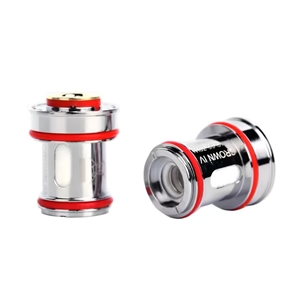
When it comes to vaping, one of the most critical components of your device is the vape coil. The coil directly affects the flavor, vapor production, and overall experience of your vape session. Whether you are a beginner or an experienced vaper, choosing the right vape coil can significantly enhance your vaping satisfaction. With various coil types available, understanding their differences and functions is essential.
What is a Vape Coil?
A vape coil is a heating element inside the atomizer or tank of a vape device. It consists of a wire wrapped into a coil shape and surrounded by a wicking material, usually made of cotton. When the battery powers the coil, it heats the e-liquid soaked in the wick, producing vapor for inhalation. The choice of coil impacts everything from throat hit to cloud production and even the longevity of your device.
Types of Vape Coils
There are different types of vape coils available, each designed to cater to specific vaping preferences. Choosing the right one depends on factors such as resistance, material, and intended vaping style.
1. Standard Coils (Round Wire Coils)
Standard vape coils are made from a single strand of wire wrapped into a coil shape. They are commonly found in starter kits and beginner-friendly vape tanks. These coils are ideal for vapers who prefer a balanced experience with moderate vapor production and flavor intensity.
- Best for: Mouth-to-lung (MTL) vaping
- Pros: Easy to use, widely available, affordable
- Cons: Slower heating, less vapor production
2. Mesh Coils
Mesh coils are made from a thin sheet of metal with multiple holes, creating a mesh-like structure. This design allows for even heating and better e-liquid absorption, resulting in enhanced flavor and larger vapor clouds. Mesh coils are becoming increasingly popular among vapers who enjoy sub-ohm vaping.
- Best for: Direct-to-lung (DTL) vaping
- Pros: Faster heating, improved flavor, longer coil lifespan
- Cons: Higher e-liquid consumption, requires more power
3. Ceramic Coils
Ceramic vape coils use a ceramic material around the heating element. This design helps retain heat longer and provides a smoother vaping experience. Ceramic coils are known for their durability and ability to enhance the flavor of e-liquids without burning the wick.
- Best for: Flavor-focused vapers
- Pros: Longer lifespan, better heat retention, reduces dry hits
- Cons: Slower ramp-up time, may require higher wattage
4. Clapton Coils
Clapton coils are made by wrapping a thinner wire around a thicker core wire. This unique design increases the surface area, leading to improved vapor production and better flavor. These coils are a favorite among advanced vapers who want a more intense experience.
- Best for: Cloud chasers and flavor enthusiasts
- Pros: Enhanced flavor, high vapor production, great heat retention
- Cons: Longer heating time, may drain battery faster
5. Temperature Control (TC) Coils
Temperature control coils are made from specific materials like nickel (Ni200), titanium (Ti), or stainless steel (SS). These coils work with temperature control (TC) mode in vape devices, allowing users to set a temperature limit to avoid overheating or dry hits.
- Best for: Preventing dry hits and maintaining consistent flavor
- Pros: Prevents burning, extends coil life, consistent vapor
- Cons: Requires a TC-compatible mod, more complex to use
Factors to Consider When Choosing a Vape Coil
1. Resistance Level (Ohms)
The resistance of a vape coil, measured in ohms (Ω), determines the amount of power it requires and affects the overall vaping experience.
- High-Resistance Coils (>1.0Ω): Suitable for MTL vaping, offering a tighter draw and better nicotine satisfaction.
- Low-Resistance Coils (<1.0Ω): Best for DTL vaping, producing bigger clouds and stronger flavor but consuming more e-liquid.
2. Wattage Compatibility
Each coil has a recommended wattage range. Using a coil at the correct wattage ensures optimal performance and longevity. Running a coil outside its recommended range can result in burnt hits or insufficient vapor production.
3. E-Liquid Compatibility
Different coils perform best with specific types of e-liquids:
- High-resistance coils work well with nicotine salts and high-PG e-liquids.
- Low-resistance coils are ideal for high-VG e-liquids, which produce more vapor but require more power.
Conclusion
Choosing the right vape coil is essential for achieving the best vaping experience. Whether you prioritize flavor, cloud production, or longevity, understanding different coil types and their characteristics can help you make an informed decision. Proper maintenance and timely replacements ensure your coils last longer and deliver consistent performance. By selecting the right coil and following best practices, you can enhance your vaping journey and enjoy a satisfying experience every time.